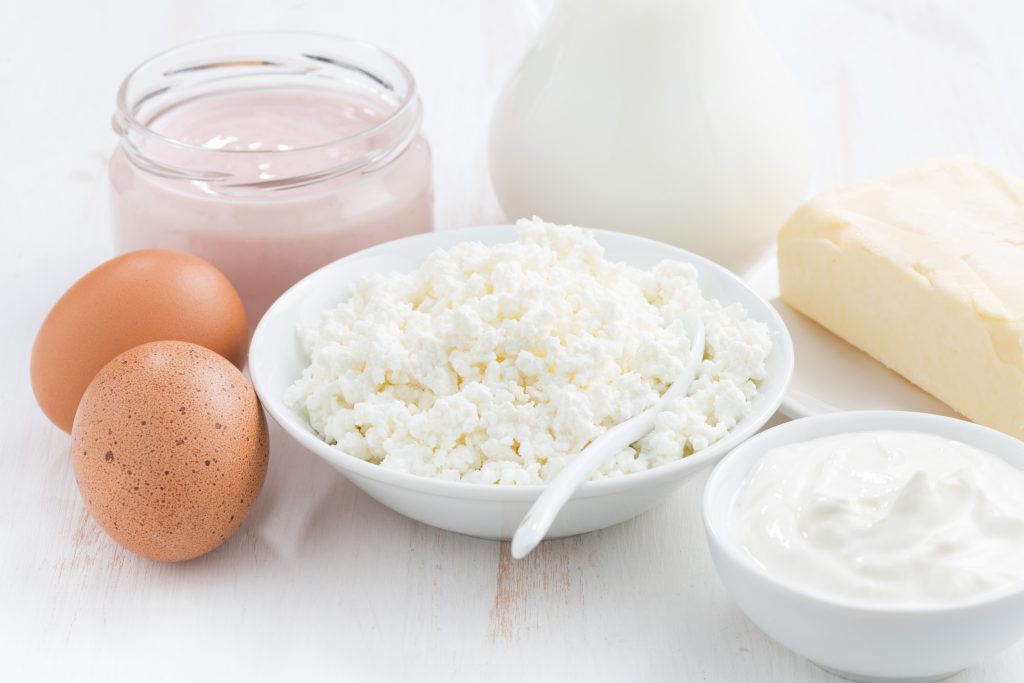
Cal2Mag, an innovative blend of Calcium and magnesium citrate for optimal bone health

Calcium and Magnesium are two main minerals in the human body that are essential for preventing osteoporosis. When combined in the correct ratio with magnesium, the body can absorb calcium without causing adverse side effects.
Gadot's Cal2Mag is a composition of Calcium Citrate and Magnesium Citrate, produced with a unique granulation process. There are various Calcium and Magnesium mineral sources, but citrates have an added value and are highly absorbable. Citrates are the only form of mineral salts that support the reduction of kidney stones, and absorption is independent of the timing (before/after meal).
What is Osteoporosis?
Osteoporosis is a disorder of the bones in which the bones become brittle, weak, and easily damaged or broken. Over time, a decrease in the mineralization and strength of the bones causes osteoporosis (NIH osteoporosis and related bone diseases national resource center).
In the past, the main focus in osteoporosis treatment was calcium as the primary bone construction material. Still, recently, scientists have understood that Magnesium has a role in osteoporosis prevention when combined with Calcium.
It was proven that Mg deficiency contributes to osteoporosis. Moreover, Mg intake was positively associated with bone mass density.
| Recommended Dietary Allowances (RDAs) | ||||
| MAGNESIUM | CALCIUM | |||
| AGE | MALE | FEMALE | MALE | FEMALE |
| 4-10 years | 130 mg | 130 mg | 800 mg | 800 mg |
| 9-13 years | 240 mg | 240 mg | 800 mg | 800 mg |
| 14-24 years | 410 mg | 360 mg | 1200 mg | 1200 mg |
| 19-30 years | 400 mg | 310 mg | 1200 mg | 1200 mg |
| 31-50 years | 420 mg | 320 mg | 1200 mg | 1200 mg |
| 51 + years | 420 mg | 320 mg | 1200 mg | 1200 mg |
There are various Calcium and Magnesium mineral sources, but citrates have an added value to these minerals.
There is a general agreement regarding higher bioavailability of organic calcium sources, particularly Citrate, compared to inorganic sources such as Phosphate and Carbonate. Only Citrates – do not cause the formation of kidney stones, and absorption is independent of timing (before/after meal).
Benefits of Calcium and Magnesium as Citrates
- High bioavailability
- High Mineral content: Cost-effective Calcium and Magnesium sources
- Neutral flavor
- Mineral absorption is independent of gastric acid secretion. It does not cause stomach upset and can be taken on an empty stomach or with a meal
- Low interference with other minerals
- Good compatibility with other nutrients
Gadot's Cal2Mag is a composition of Calcium Citrate and Magnesium Citrate, which was submitted to a unique granulation process with a binder addition.
This enables the tablet producer to benefit from the following:
- Prevention of segregation of the powder mixture constituents
- Improved flow properties of the mixture
- Improved compaction characteristics of the mix
- Eliminate excessive amounts of dust particles
Each 1 gram of Cal2Mag contains 100 mg Calcium and 50 mg Magnesium Citrates (10% of the RDA daily recommended allowance of Ca and 14% of the RDA daily recommended allowance of Mg).
It is important to remember, that Tablet Characteristics are formed in the granulation process of the powders before the tableting process.
Calcium

- Calcium is the most abundant mineral in the body and vital for bone health
- Required to build and maintain strong bones and healthy communication between the brain and other body parts
- Regulates muscle contraction, including the beating of the heart muscle
- Calcium plays a crucial role in normal blood coagulation (clotting)
- Calcium is a co-factor for many enzymes; this means that without the presence of calcium, these crucial enzymes cannot work as efficiently
Calcium continues strengthening the bones of humans until they reach the age of 20-25, when bone density is highest. After that age, bone density declines, but calcium continues to help maintain bones and slow down bone density loss, which is a natural part of the aging process.
People who do not consume enough calcium before the age of 20-25 have a considerably higher risk of developing a brittle bone disease or osteoporosis* later in life because calcium is drawn from the bones as a reserve.
Source: Medical News Today, Christian Nordqvist, August 2017
https://www.medicalnewstoday.com/articles/248958.php
*https://www.medicalnewstoday.com/articles/155646.php
Magnesium

- It is the fourth most abundant mineral in your body
- Exists in over 300 different bodily enzymes
- Is found primarily in your bones (half of your total body magnesium)
- Plays a role in your body’s detoxification processes
- Aids your energy metabolism and protein synthesis
- Helps guide a large number of physiological functions
- Is required by glutathione (the “master antioxidant”) for synthesis
- Is especially valuable for supporting your brain health
Magnesium also plays a role in the active transport of calcium and potassium ions across cell membranes, which is important to nerve impulse conduction, muscle contraction, and normal heart rhythm.
The human body contains about 25 grams of Magnesium, of which 50-60% is in the skeleton and 25-30% in muscle. One-third of skeletal magnesium is exchangeable, and that is the fraction which serves as a reservoir for maintaining an average extracellular magnesium concentration.
Calcium and Magnesium Citrates Combination - Scientific Support
Dose dependency of calcium absorption: a comparison of calcium carbonate and calcium citrate
This study was performed to determine the dose dependency of calcium absorption in an attempt to derive an optimum dose schedule. Using the well-described oral calcium load technique, we measured the calcium absorption from three different calcium doses (0.5, 1.0, and 2.0 g) of calcium carbonate and calcium citrate administered to 21 normal subjects (4 men and 17 women, 22-60 years). Nine subjects underwent two additional loads with 0.2 g of elemental calcium as calcium carbonate and calcium citrate. The intestinal calcium absorption from calcium carbonate and calcium citrate was estimated from the rise in urinary calcium following oral ingestion of the respective calcium salt.
The increment in urinary calcium post-load, reflective of intestinal calcium absorption, rose rapidly from 0 to 0.5 g calcium loads with only slight subsequent increases from the 0.5 g to 2.0 g calcium doses.
Thus, results indicate that 0.5 g of calcium is the optimum dose of calcium salt. Moreover, the increment in urinary calcium post-load was higher from calcium citrate than calcium carbonate at all four dosage levels. The increment in urinary calcium (during the second 2 hr) following calcium citrate load (0.5 g calcium) was 0.104 +/- 0.096 mg/dl glomerular filtrate (GF), which was higher than that of 0.091 +/- 0.068 mg/dl GF obtained from 2.0 g calcium as calcium carbonate.
These results confirm the superior calcium bioavailability from calcium citrate compared with calcium carbonate.
From the literature,. it appears that the bioavailability of Organic Magnesium is higher than that of Inorganic Magnesium.
"Magnesium absorption measured by the increase in urinary Magnesium following intake of Magnesium oxide or magnesium citrate demonstrated a significantly higher absorption from citrate in normal volunteers…. In vitro solubility showed that Magnesium oxide was only 43% soluble in simulated peak gastric acid secretion, while magnesium citrate was 86% soluble under these conditions."
Ref: "Magnesium bioavailability from magnesium citrate and magnesium oxide"
(Source: Harvey JA, Zobitz MM, Pak CY. J. Bone Miner. Res 1988 Jun; 3(3): 253-8)
Lindberg, J.S., Zobitz, M.M., Poindexter, J.R., Pak, C.Y.C. Journal of the American College of Nutrition, 1990; 9; 48-55
- Nutrients. 2013 Aug; 5(8): 3022–3033., Magnesium and Osteoporosis: Current State of Knowledge and Future Research Directions, Sara Castiglioni, Alessandra Cazzaniga, Walter Albisetti, and Jeanette A. M. Maier. https://www.ncbi.nlm.nih.gov/pmc/articles/PMC3775240/
- Saito N., Tabata N., Saito S., Andou Y., Onaga Y., Iwamitsu A., Sakamoto M., Hori T., Sayama H., Kawakita T. Bone mineral density, serum albumin, and serum magnesium. J. Am. Coll. Nutr. 2004;23:701S–703S. Doi: 10.1080/07315724.2004.10719412.
- Tucker K.L., Hannan M.T., Chen H., Cupples L.A., Wilson P.W., Kiel D.P. Potassium, magnesium, and fruit and vegetable intakes are associated with greater bone mineral density in elderly men and women. Am. J. Clin. Nutr. 1999;69:727–736.
- Stendig-Lindberg G., Koeller W., Bauer A., Rob P.M. Experimentally induced prolonged magnesium deficiency causes osteoporosis in the rat. Eur. J. Intern. Med. 2004;15:97–107. doi: 10.1016/j.ejim.2004.01.003.
- Tranquilli A.L., Lucino E., Garzetti G.G., Romanini C. Calcium, phosphorus and magnesium intakes correlate with bone mineral content in postmenopausal women. Gynecol. Endocrinol. 1994;8:55–58. doi: 10.3109/09513599409028459.
- Carpenter T.O., DeLucia M.C., Zhang J.H., Bejnerowicz G., Tartamella L., Dziura J., Petersen K.F., Befroy D., Cohen D. A randomized controlled study of effects of dietary magnesium oxide supplementation on bone mineral content in healthy girls. J. Clin. Endocrinol. Metab. 2006;91:4866–4872. doi: 10.1210/jc.2006-1391.
- Matias C.N., Santos D.A., Monteiro C.P., Vasco A.M., Baptista F., Sardinha L.B., Laires M.J., Silva A.M. Magnesium intake mediates the association between bone mineral density and lean soft tissue in elite swimmers. Magnes. Res. 2012;25:120–125.[PubMed]
- Cohen L., Kitzes R. Infrared spectroscopy and magnesium content of bone mineral in osteoporotic women. Isr. J. Med. Sci. 1981;17:1123– 1125.
- Warburton D.E., Nicol C.W., Gatto S.N., Bredin S.S. Cardiovascular disease and osteoporosis: Balancing risk management. Vasc. Health Risk Manag. 2007;3:673–689.
Author: MICHAEL PAIKIN |  |


